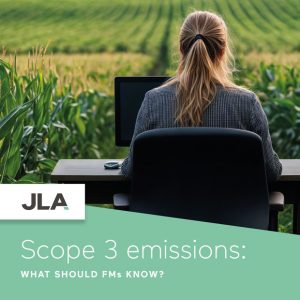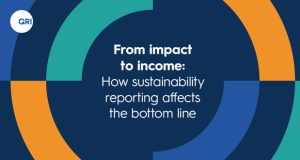 By Jonathan Ling, Legal and HR Director at JLA
By Jonathan Ling, Legal and HR Director at JLA
As JLA’s sustainability strategy lead, I take accountability for driving down emissions across our entire value chain. This means I’ve seen first-hand how much influence FMs can have – not just in managing day-to-day operations, but in shaping the long-term environmental impact of their organisations. With sustainability rising on the agenda, understanding and managing your organisation’s carbon emissions is now a critical part of the FM role. But where Scopes 1 and 2 already offer a clear, well-established way to classify and report emissions, the newer Scope 3 is set to have an even bigger impact. This is because Scope 3 involves quantifying indirect emissions across your whole supply chain – from procurement and outsourced services, right through to business travel, waste disposal and employee commutes. In fact, Scope 3 could account for up to 90% of your entire carbon footprint.
So, what is Scope 3, and what do you need to know?
Understanding Scope 1, 2 and 3 emissions
While Scope 1 emissions cover processes owned or controlled by your organisation, like fleet vehicles, and Scope 2 quantifies emissions resulting from energy you use but don’t generate, like electricity, Scope 3 is much broader, covering emissions created across your entire value chain.
The obvious complexity of this makes Scope 3 the hardest to measure, but also the most meaningful to act on. And while Scope 3 reporting isn’t mandatory just yet, your organisation will gain credibility for including it in any Net Zero planning.
How FMs can lead on Scope 3
JLA’s joint research with FMJ, published in our recent white paper, shows that 54% of FMs are already factoring sustainability into their procurement decisions, with a third treating it as a top priority.
But when it comes to supplier engagement, there’s an unfortunate gap. We found that only 12% of FM professionals are speaking to suppliers about sustainability – despite the fact that Scope 3 reporting relies on the data, and, crucially, the decisions, of your supply partners.
Behind costs, tracking emissions is widely seen as being the second biggest barrier to achieving sustainability, which is why starting the dialogue is essential. Right now, just 1% of FMs report actively talking with suppliers about making improvements.
 That said, there signs of growing momentum. Water conservation, as one example, is already a priority for 63% of FMs, highlighting a focus on resource use and environmental impact. And as Scope 3 becomes more visible – and urgent – for all of us, a drive for new transparency and accountability should spread across the sector.
That said, there signs of growing momentum. Water conservation, as one example, is already a priority for 63% of FMs, highlighting a focus on resource use and environmental impact. And as Scope 3 becomes more visible – and urgent – for all of us, a drive for new transparency and accountability should spread across the sector.
Want to understand what falls under Scope 3? Download JLA’s quick guide here.




